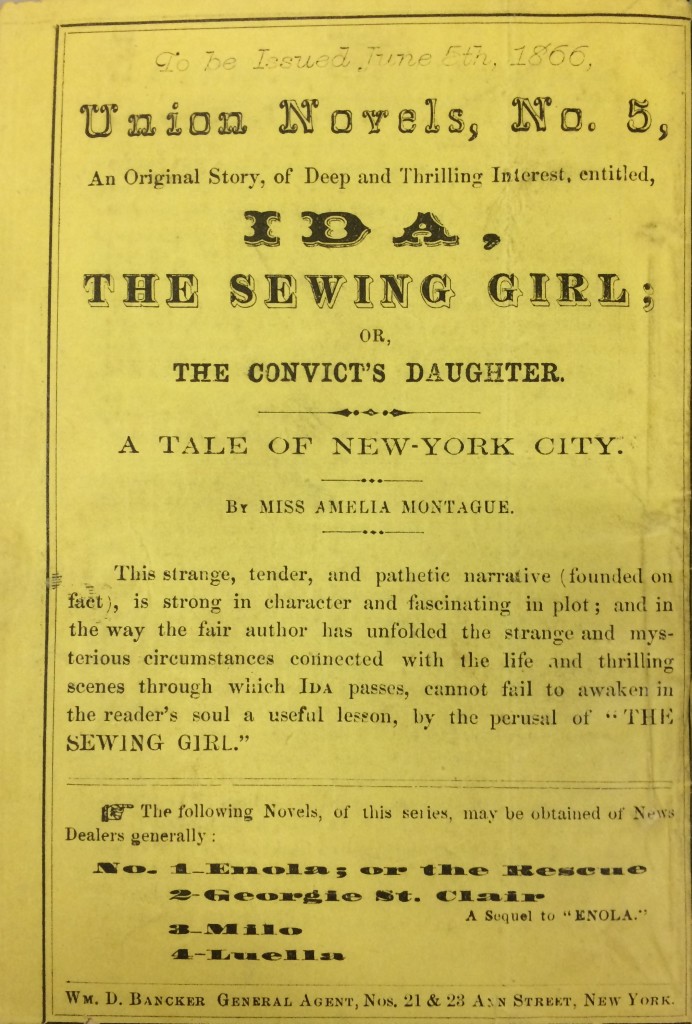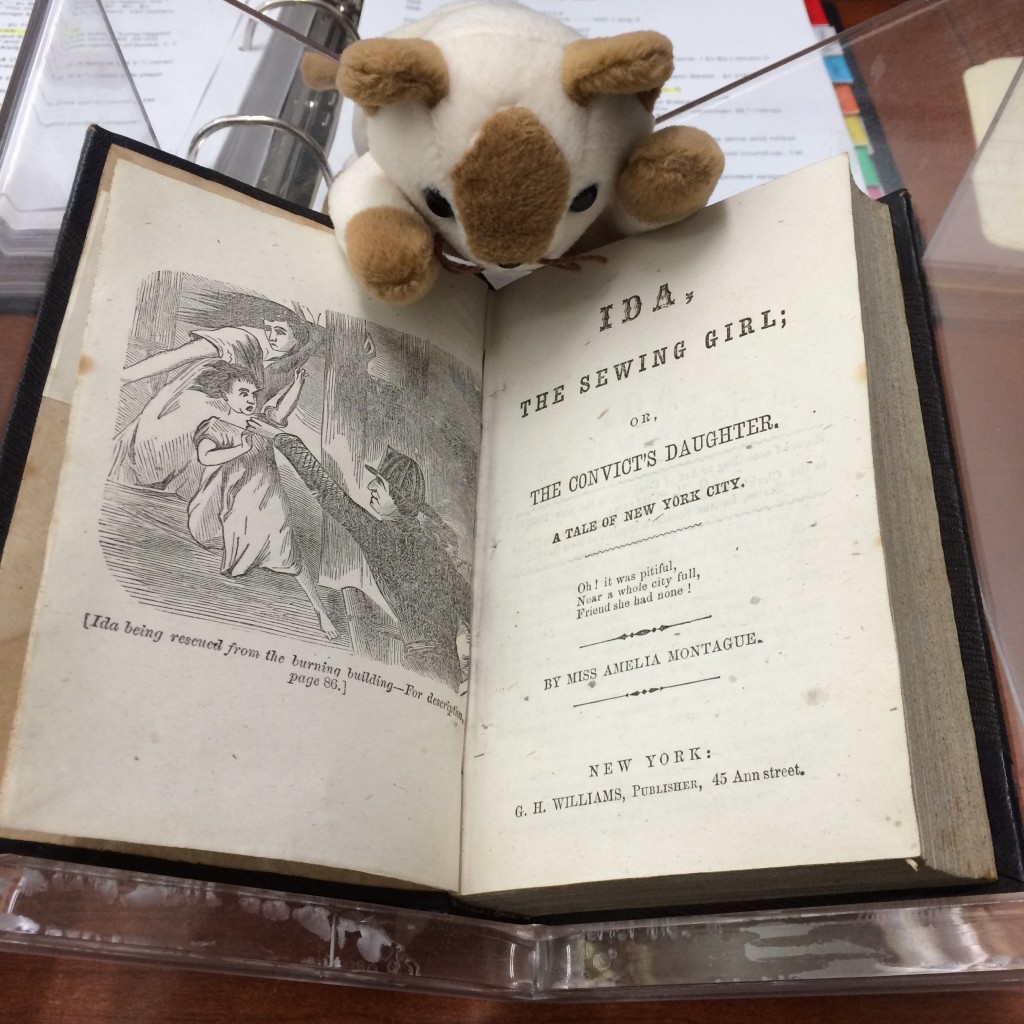In a post last January about the difficulty of cataloging dime novels, I discussed how much valuable information is lost when a novel no longer has its wrapper (paper cover). One of the most important kinds of information lost is series information. Knowing that a novel was in a specific series is one of the best places to start if the novel is missing useful information, like a publication date. But without wrappers, you’re left with what you can find on the title page and in the text.
Most of the novels I’m cataloging have no wrappers. They’ve been rebound in volumes containing anywhere from five to seven novels. The novels aren’t always in any useful order, and sometimes they have novels from multiple publishers in one volume. In the cataloging office, we joke that the research needed to do the kind of deep cataloging to which we are committed is “forensic cataloging,” and dime novels without wrappers frequently call for my forensic skills.
In one of the volumes I cataloged, I came across a novel called Ida, The Sewing Girl; or, The Convict’s Daughter by Miss Amelia Montague, which was published by G. H. Williams and copyrighted in 1866. This is enough information to do basic cataloging, but I thought it would be worth a little extra work to see if it was originally published as part of a series. There were no records in other libraries, and no mention of the novel in a quick Internet search. Now, I was 95% sure I’d seen G. H. Williams’s name somewhere, but I couldn’t for the life of me think where. He didn’t appear in any of my dime novel bibliographies, and I couldn’t find anything useful online. I went to check our collection of loose dime novels, those that aren’t bound together. Williams was mentioned on the label for the last box as the publisher of Chaney’s Union novels. The one novel we had in the series had been moved to C for Chaney, and when I looked at it, I saw that it was indeed also published by G. H. Williams. Now that I had a series, one I knew I’d read about, I went back to my bibliographies. Of course, I only looked at the front wrapper and didn’t bother looking at any of the advertisements.
 The series was in my reference sources, and they pretty much all said that there were only four issues. The entire description of this series was based only on issue no. 3, which had a list of the previous two novels, and an advertisement for no. 4, Luella; or, The Magic Kiss. What I had in the bound volume was not one of these four. But the one we had in wrappers in the stacks, it turned out, was a copy of no. 4, which no one had seen, and I trekked back out into the stacks to look at it again, and finally looked at the advertisement on the back of the wrapper, where it advertised no. 5 in the series (see right). I almost did a happy dance in the stacks when I saw that it was advertising Ida, the poor, wrapperless novel sitting on my desk.
The series was in my reference sources, and they pretty much all said that there were only four issues. The entire description of this series was based only on issue no. 3, which had a list of the previous two novels, and an advertisement for no. 4, Luella; or, The Magic Kiss. What I had in the bound volume was not one of these four. But the one we had in wrappers in the stacks, it turned out, was a copy of no. 4, which no one had seen, and I trekked back out into the stacks to look at it again, and finally looked at the advertisement on the back of the wrapper, where it advertised no. 5 in the series (see right). I almost did a happy dance in the stacks when I saw that it was advertising Ida, the poor, wrapperless novel sitting on my desk.
Since none of the bibliographers had had access to our copy of no. 4 (and we seem to be the only library that has it), they had no reason to think a fifth issue had been published. I also realized that the reason G. H. Williams wasn’t listed in any of the bibliographies as a publisher is that the publisher on no. 3 (the only one seen) was Chaney and Williams, and that’s the firm described in the reference sources. Williams took over as sole publisher with no. 4. In the end, solving the mystery of Ida would have been impossible if our copy of Luella also hadn’t had wrappers.
Cataloging novels in the more famous series, like Beadle’s dime novels, is much easier, because they are well-documented. More copies of those novels existed, and survived for researchers to write about. But the work of cataloging novels like Ida is ultimately more fun and satisfying.
If you’ve enjoyed these posts about dime novels, check out our online exhibition Women and the World of Dime Novels!

